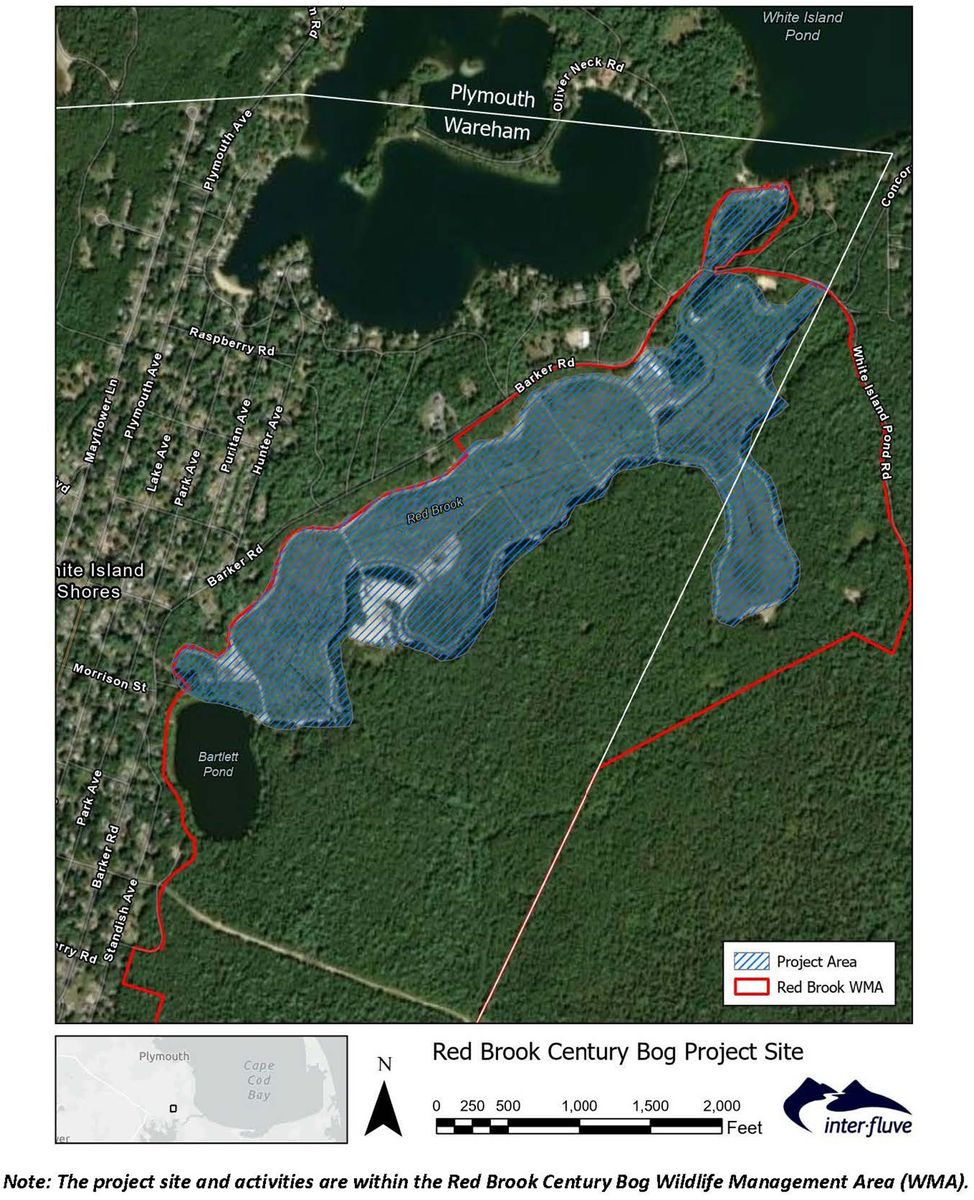Century Bog
Ecological restoration is proposed at Century Bog in the Red Brook Wildlife Management Area to restore a more naturalized stream channel for the headwaters of Red Brook and its associated wetlands within a 70-acre retired cranberry farm. Red Brook begins at the outlet of White Island Pond and flows through Century Bog before flowing south through protected lands to Buzzards Bay. The site has been subject to significant alterations since the colonial era, notably the original headwaters of Red Brook south of Century Bog were extended north to White Island Pond and Bartlett Pond to facilitate herring harvest, and the bogs were significantly altered to support commercial farming. To commercially produce cranberries, the stream was further regulated with a series of flow control structures and earthen berms were constructed. Lateral and perimeter ditches were dug to drain the wetlands and control water on the farm. In addition, sand was spread over the farm surface every few years to enhance cranberry growth and suppress other plants from growing. These alterations have fundamentally changed the wetland ecosystems as well as the stream form and function.
Mass Wildlife, Massachusetts Division of Ecological Restoration (DER), Massachusetts Department of Fish and Game (DFG) In-Lieu Fee Program, Buzzards Bay Coalition, Mass Audubon, Ducks Unlimited, National Fish and Wildlife Foundation, B-120 Trustees Council, National Oceanic and Atmospheric Administration and US Army Corps of Engineers.
Century Bog was retired in 2014 with a vision for its restoration to natural wetlands, cold-water stream habitat, improved migratory fish passage, and upland sandplain habitat. Reducing unauthorized site use by motorized vehicles is also desired while providing passive recreation in this permanently protected open space owned by Mass Wildlife.
Initial data collection, assessment, and designs were prepared by Princeton Hydro in 2014. Inter-Fluve, Inc. updated the design plans and permit applications for federal, state and local review in 2025. Construction is expected to begin in spring 2026.
Princeton Hydro Environmental Assessment
Supplemental Basis of Design Report (Inter-Fluve), March 2025
Order of conditions
Monitoring locations

